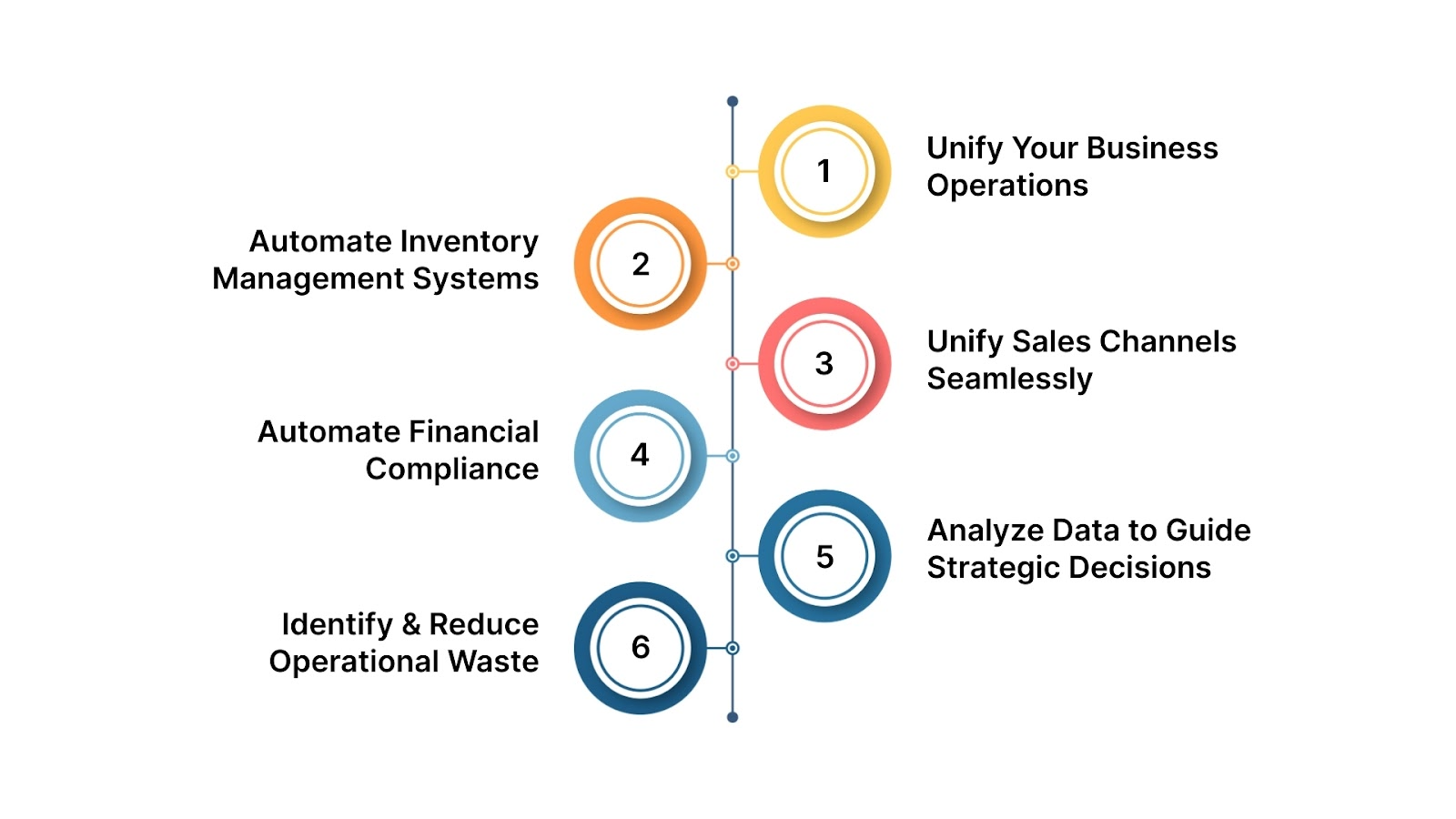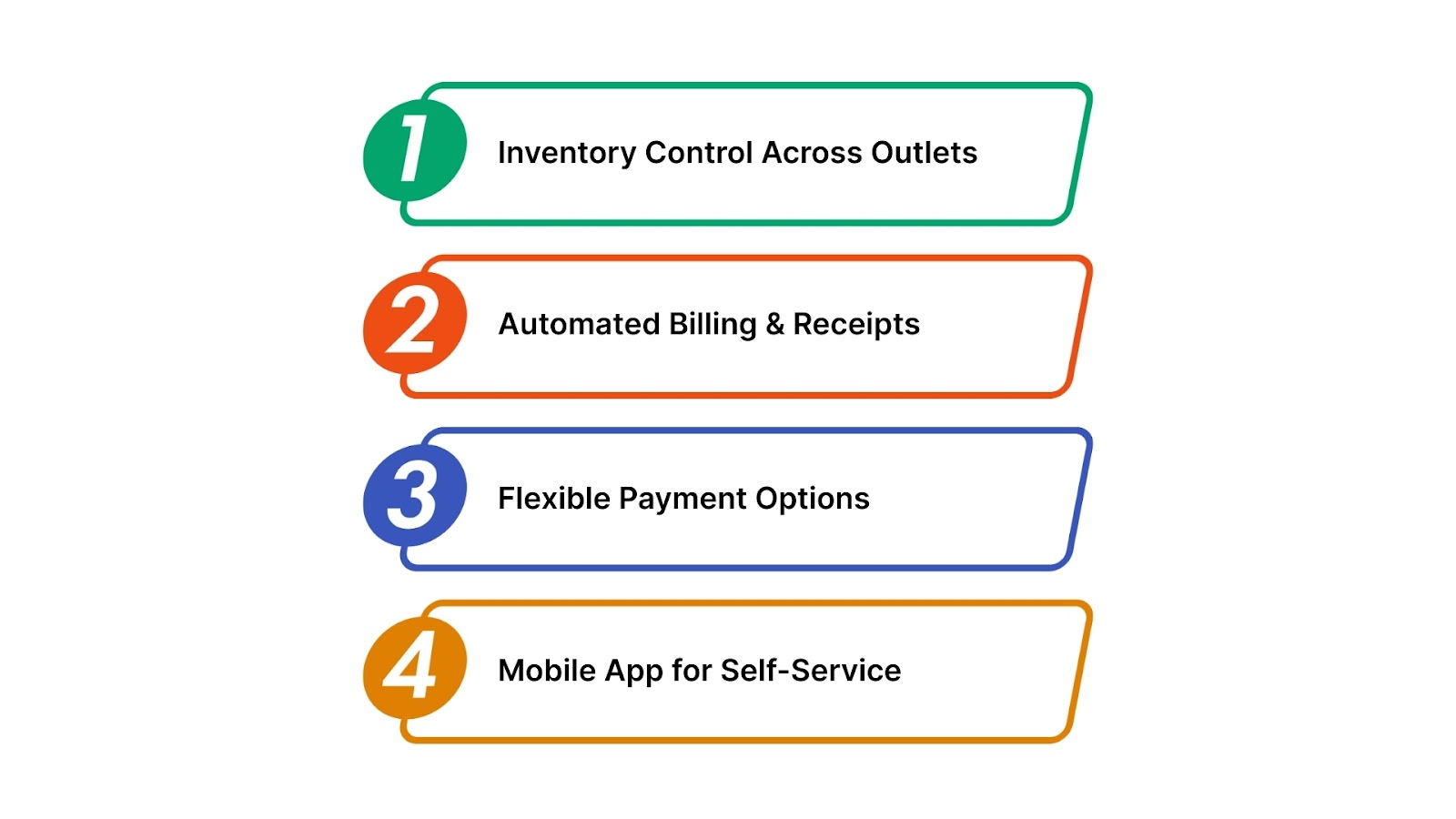
Retail in Saudi Arabia is advancing rapidly, shaped by bold government initiatives, rising consumer sophistication, and a wave of digital innovation. Yet for business owners and decision-makers, these changes introduce a distinctive set of hurdles.
Supply chain delays, shifting shopper expectations, compliance requirements, and mounting competition are now everyday concerns. As the sector adapts to a more connected, data-driven future, your ability to address these challenges directly impacts both customer satisfaction and long-term growth.
In this blog, you'll discover the issues retailers face in 2025 and practical solutions that can help your business stay ahead, no matter how dynamic the market becomes.

Retailing is the process of selling goods or services directly to consumers for their personal use. It involves activities like selecting products, managing inventory, pricing, and providing customer service, serving as the final step that connects manufacturers or wholesalers with end customers.
Retailing takes place both in physical stores and through growing online platforms, reflecting the increasing preference for convenience and accessibility. Here’s why it is important:
Retail is a major contributor to the Saudi economy, generating significant revenue and serving as one of the largest sources of private-sector employment, from sales staff to logistics managers.
The sector provides the population with essential access to products, from food and clothing to electronics, directly supporting standards of living and convenience.
Effective retail operations do more than move inventory; they build brand loyalty through customer service, product availability, and a positive shopping experience that encourages repeat business.
Retailers are vital partners for both multinational brands and local suppliers and manufacturers, providing a necessary channel to market and helping to circulate capital within the local economy.
Also read: ERP Systems for Small Retail Businesses in 2024

Retailing in Saudi Arabia is growing fast, fueled by a young population, government initiatives like Vision 2030, and rising consumer spending. Despite this momentum, retailers face a variety of challenges that will affect their ability to meet customer expectations, control costs, and comply with evolving regulations.
Understanding these challenges clearly allows you to identify the right strategies for overcoming them and maintaining a competitive edge in 2025 and beyond:
Using separate programs for sales, inventory, accounting, and e-commerce creates isolated data silos. This disconnect forces your staff to waste time manually transferring information between systems, which often leads to errors.
You end up with conflicting reports from different departments, making it difficult to have a single, accurate view of your business performance.
Manual inventory tracking or using basic software makes it nearly impossible to know your exact stock levels across multiple stores or warehouses. This frequently results in best-selling items being out of stock, leading to lost sales and dissatisfied customers.
Conversely, capital can become tied up in slow-moving inventory that takes up valuable space and may eventually need to be discounted.
Also read: Best Accounting Software For Your Online Retail Business
Modern consumers expect to browse online and buy in-store, or vice versa, without any friction. Managing this requires a unified view of inventory, customer data, and orders across all channels.
Without it, you risk selling an item online that is already out of stock in the warehouse or being unable to offer services like click-and-collect, putting you at a competitive disadvantage.
Meeting the mandates for ZATCA e-invoicing and VAT reporting is a legal requirement for your business. Manually handling this compliance is a time-consuming task that is highly susceptible to human error. Mistakes can lead to financial penalties during an audit and create significant work to reconcile your records.
Intense competition often pressures pricing, while expenses for rent, utilities, and payroll continue to increase. Inefficient processes, such as manual stock ordering or excessive time spent on administrative tasks, directly eat into your already slim profits. Identifying areas of waste and improving operational efficiency is critical for maintaining profitability.
Modern consumers, especially in Saudi Arabia's growing market, expect more than just products. They demand personalized experiences, rapid service, and ethical business practices. Keeping pace with these constantly changing trends requires agility and deep customer insight that many traditional systems cannot provide.
Also read: The Ultimate Guide to Top Retail ERP Software Solutions

Addressing these challenges requires a move from reactive problem-solving to proactive management. By implementing focused strategies, you can build a more resilient and adaptable retail operation. The following practices are central to streamlining your processes, reducing costs, and improving customer satisfaction.
Using separate systems for sales, inventory, and accounting creates unnecessary work and errors. A unified platform connects these functions, ensuring that a sale at the counter automatically updates inventory levels and your financial records.
This eliminates manual data entry, reduces mistakes, and gives you one reliable source of truth for your entire business.
Manual stock counts and guesswork lead to problems. An automated system tracks inventory in real-time across all locations. It can be set to generate purchase orders when stock reaches a predetermined level, helping you avoid both stockouts that lose sales and overstocking that ties up capital. This is particularly useful for managing demand around peak seasons.
Customers expect to interact with your brand online and in-store without friction. Connecting your e-commerce website, physical store, and other sales points allows for services like buying online and picking up in-store.
It also provides a single view of customer history and preferences, enabling more personalized service and building stronger loyalty.
Manually managing ZATCA e-invoicing and VAT reporting is complex and risky. Systems designed for the Saudi market can automatically generate compliant e-invoices and populate VAT return forms with accurate data pulled directly from your sales.
This reduces the administrative burden on your team and minimizes the risk of non-compliance penalties.
Your sales data holds valuable insights that can guide your business choices. Moving beyond basic reports to analyze trends helps you identify your best-selling products, understand seasonal buying patterns, and measure the success of promotions.
This allows you to make informed decisions about purchasing, marketing, and pricing to improve profitability.
Closely reviewing your processes often reveals areas where money is being lost, such as inefficient staffing, energy overuse, or unnecessary administrative tasks. Streamlining these operations and eliminating waste directly protects your profit margins. This is a continuous process that helps you maintain competitiveness even as market costs rise.
Also read: Understanding Enterprise Project Management: Strategies and Benefits

HAL ERP consolidates essential retail functions into a single platform, providing comprehensive control over multi-outlet operations. The system ensures efficient inventory tracking across all locations to maintain optimal stock levels.
It enhances the customer experience through automated billing, flexible payment options including BNPL, and instant digital receipts. Built-in integrations with major payment gateways, e-commerce platforms, and loyalty programs work together to streamline operations from sales to fulfillment, while detailed analytics provide actionable insights for strategic decision-making.
Key features:
Al-Haram, a Saudi retail chain, needed a reliable solution for ZATCA e-invoicing compliance. They selected HAL's VAT Care for its proven track record. The implementation was completed swiftly, ensuring a smooth transition with no business disruption.
The system now automatically generates ZATTA-compliant invoices, simplifying their tax reporting and eliminating manual errors. This provides Al-Haram with full peace of mind regarding their compliance status and allows them to focus on core retail operations.
Struggling to keep up with the pace of the retail market often means your team is buried in manual tasks instead of focusing on growth and customer service. HAL Simplify changes this by providing a unified system that brings predictability and control to your operations.
This replaces guesswork with data-driven clarity, allowing you to anticipate market shifts, adapt to regulatory changes like ZATCA updates effortlessly, and meet evolving customer expectations with confidence. This is how you build a resilient operation prepared for what's next.
See how a unified system can work for your business. Book your demo today.
Q. What is the biggest challenge in retail right now?
The core challenge is operational fragmentation. Using disconnected systems creates data silos, leading to inefficiency, inaccurate reporting, and an inability to get a single, reliable view of business performance.
Q. How can retailers improve inventory management?
Implement an automated system that provides real-time visibility across all locations. This prevents stockouts and overstocking by automatically generating purchase orders when inventory reaches predetermined levels.
Q. What does 'omnichannel' mean for a retail business?
It means providing a seamless customer experience across online and physical stores. This requires a unified system that synchronizes inventory, customer data, and orders to enable services like buy-online-pick-up-in-store.
Q. How can ERP software help with retail challenges?
A retail ERP integrates all operations into one platform. It automates tasks, eliminates data silos, ensures ZATCA compliance, and provides the tools needed to manage complex omnichannel strategies.
Q. Why is ZATCA compliance a challenge for KSA retailers?
The high volume of daily transactions makes manual compliance prone to errors, which can lead to penalties. The challenge is automating this process within existing sales operations to reduce risk and administrative work.
Q. How can data analytics benefit a retail business?
It provides insights into sales trends, best-selling products, and customer behavior. This allows for informed decisions on purchasing, marketing, and pricing to improve profitability.